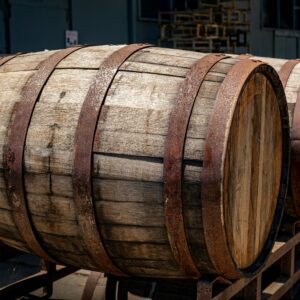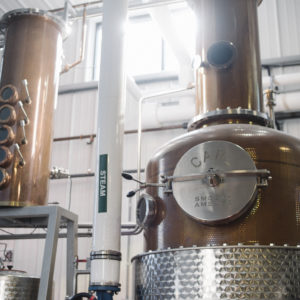This is an advanced-level article that presumes working knowledge of gauging and proofing terms and methodologies. It includes excerpts from an article entitled Proofing and Gauging that I wrote for Craft Spirits Magazine, as well as presentations I’ve given over the years.
If you have product on hand that has 6g/Liter or more of dissolved solids, the TTB considers this to be “obscured” (the true proof is hidden behind the presence of solids; you must account for the solids to achieve a correct proof and volume measurement). You are permitted to ignore the effects of solids up to 6g/Liter when determining volume and up to 4g/Liter when determining proof. Above those thresholds, you must account for them.
A gauge comprises two parts: determining the volume of the product, and determining the proof. Combining these two measures gives you a figure in “proof gallon” terms, which is the ultimate result of a gauge.
To determine the volume of obscured product by weight, it’s necessary to measure both the apparent proof (naïve reading of the hydrometer without considering solids) as well as the true proof. The apparent proof is used to compute the volume of the product, and the true proof is used to compute proof gallons based on this computed volume. Note: all proof/density measurements must be temperature corrected.
The best way to illustrate is by example. Let’s say you’ve got 2150 lbs of obscured spirit in an IBC tote on a scale, and you must gauge it. Step one is to determine if the product is denser than water or less dense than water. Test with a standard hydrometer or density meter; if you get a valid proof reading (even a very low one), then your product is less dense than water. If, instead, your hydrometer floats too high for a reading (or the density meter indicates it’s out of range), your product is likely denser than water.
Less dense than water
You simply look up the “wine gallons per pound” in TTB Table 4 for the apparent proof and multiply this by the observed weight. For example, you might observe 25.6 proof, which corresponds to 0.12210 wine gallons per pound. Multiply this by 2150 lbs and you’ll see that your product is 262.52 wine gallons.
More dense than water
You’re obliged to switch from proof hydrometers to specific gravity hydrometers, calibrated at 60F. You use the specific gravity reading, along with the density of water, to compute the wine gallonage. For example, you might observe a specific gravity reading of 1.0015 @ 60F. The density of water at 60F is given by regulation as 0.120074 gallons per pound. Divide this density by the specific gravity reading and multiply by the observed weight: 0.120074 ÷ 1.0015 * 2150 = 257.77 wine gallons.
Determining proof
Now that you have the volume portion of your gauge, you just need to determine the true proof of the spirits. Depending on the level of obscuration, this can be achieved in a few different ways. The most common methods are evaporation and bench distillation. Evaporation is only allowed in narrow circumstances: 80-100 apparent proof, up to 6g/Liter. Bench distillation is always allowed. Performing these determinations correctly is no small feat and is beyond the scope of this article.
Let’s assume that you determined the true proof of the product is 50.0 proof. You can finish your gauge by multiplying the wine gallons by the proof ÷ 100 to get Proof Gallons, like so:
262.52 Wine Gallons * 50 Proof ÷ 100 =
131.26 Proof Gallons






